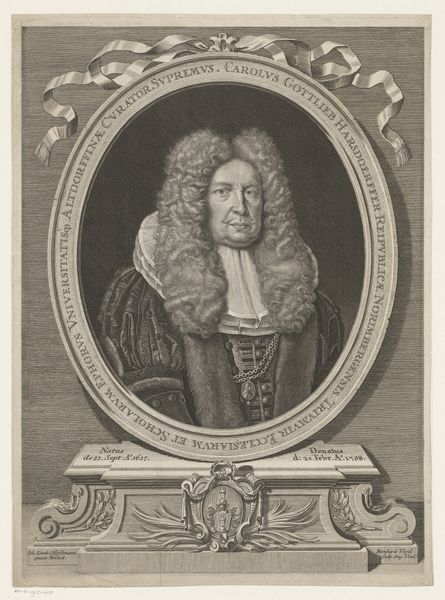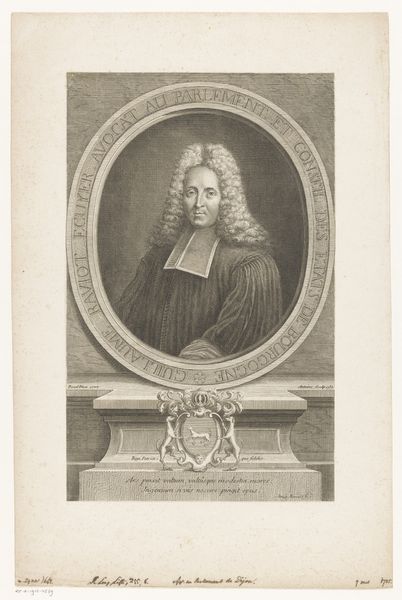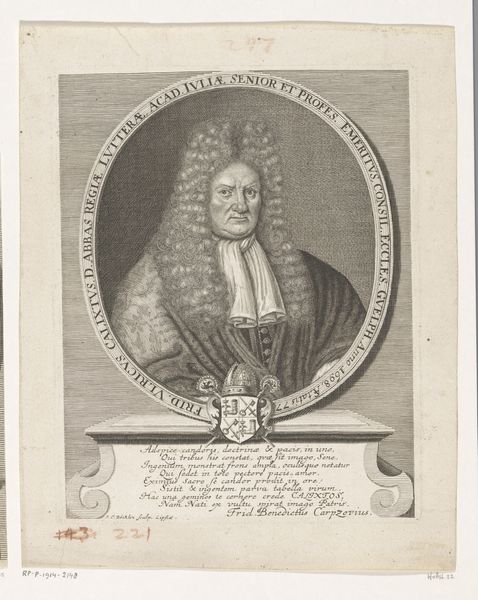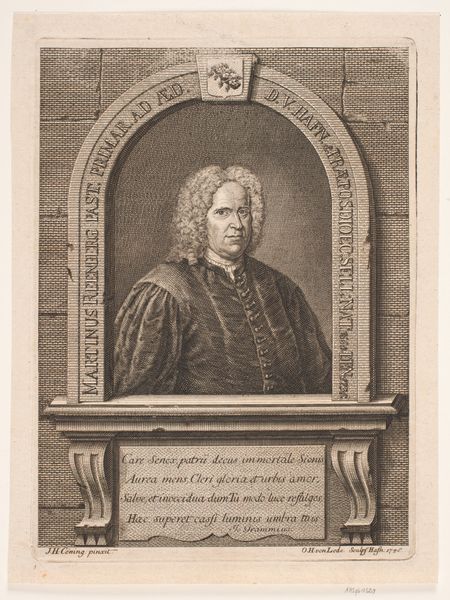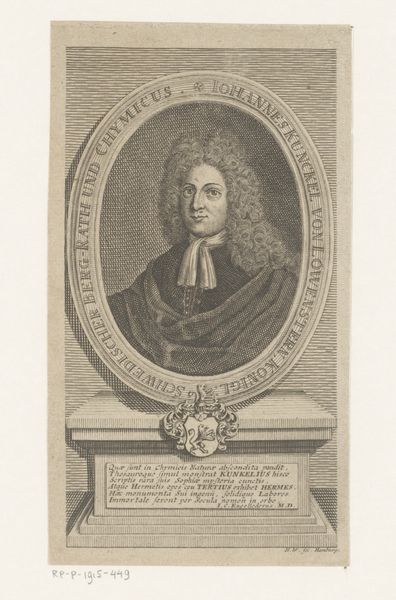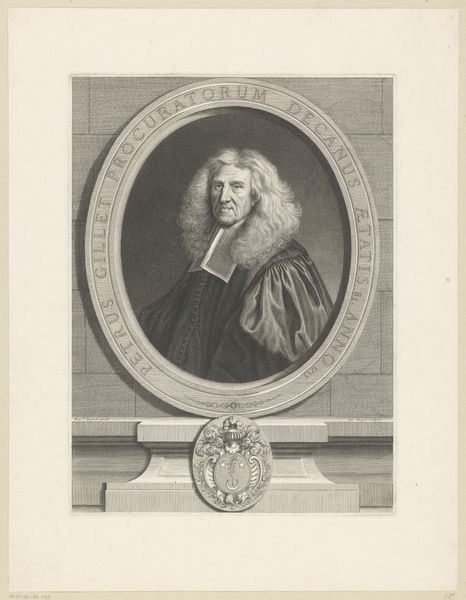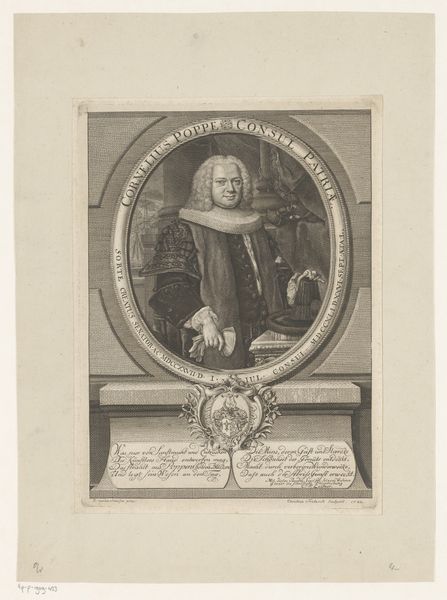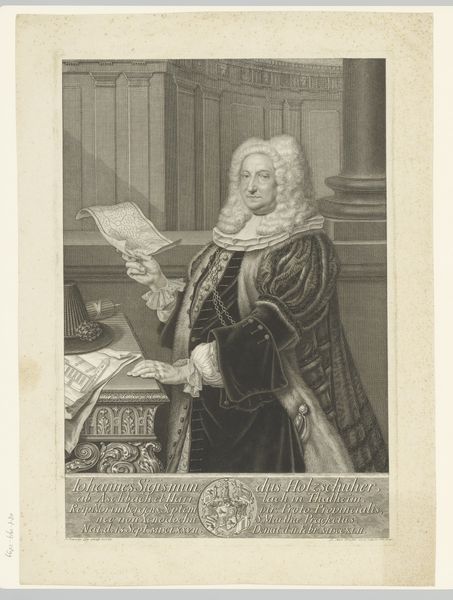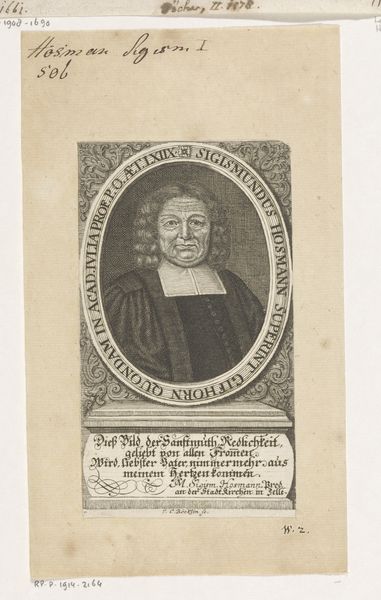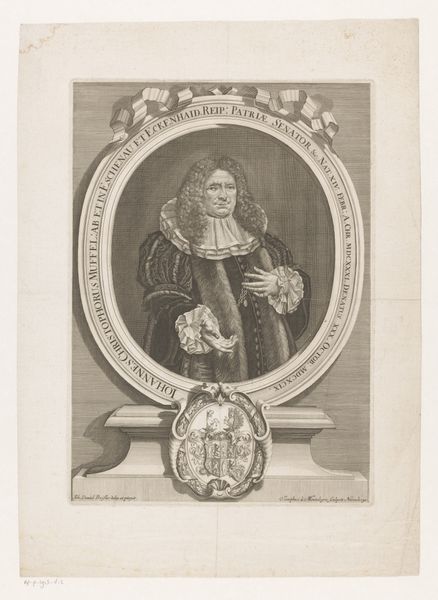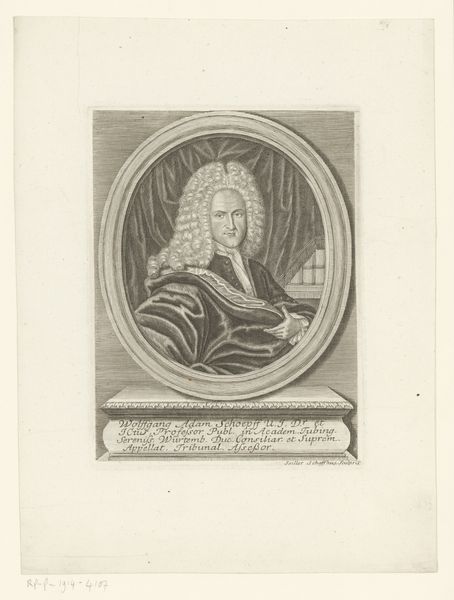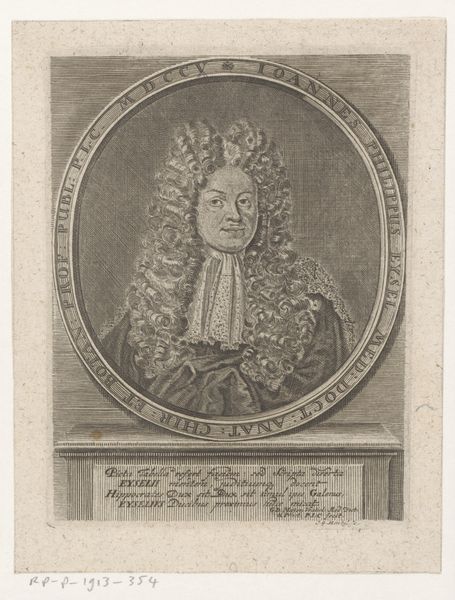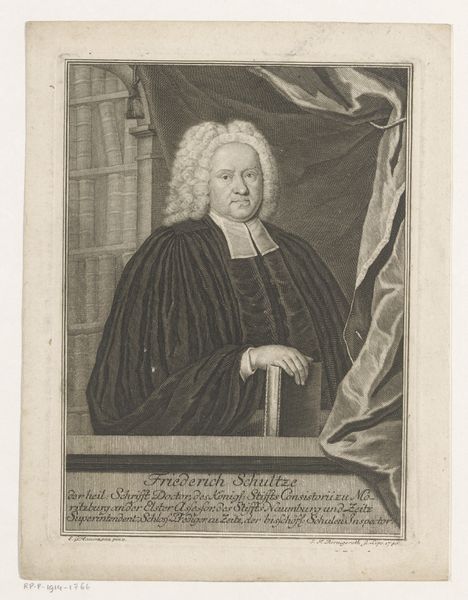
#
pencil drawn
#
photo of handprinted image
#
aged paper
#
toned paper
#
photo restoration
#
old engraving style
#
retro 'vintage design
#
historical photography
#
old-timey
#
19th century
Dimensions: height 185 mm, width 137 mm
Copyright: Rijks Museum: Open Domain
Editor: So, this is a portrait of Johann Jacob Baier, created in 1728. It appears to be an engraving, so presumably printed. The detail is quite striking! What strikes you most about this piece? Curator: I'm drawn to how the printmaking process allows us to consider issues of reproduction and access. Think about the labor involved in creating the plate versus the relative ease of producing multiple impressions. Who was this image intended for and how would its material form shape its reception? Editor: That's fascinating, I hadn't thought about it that way. Does the choice of engraving itself suggest something about Baier’s status or perhaps the intended audience? Curator: Absolutely. Engravings like this would have been produced within a network of artisans and intellectuals, dependent on patronage and systems of knowledge sharing. The print, in a way, commodifies Baier’s image, circulating it amongst the learned elite. Consider the textural qualities achieved with the engraved lines – what do they mimic and how effective are they? Editor: I see what you mean. It seems like they were trying to replicate the detail and shading you might find in a painting, but through a much more painstaking, replicable method. And those Latin inscriptions are definitely geared toward an educated audience! Curator: Precisely. By examining the material processes and intended audience, we can gain a clearer understanding of the artwork’s social and cultural function beyond just its representational value. We begin to perceive the economic realities influencing artistic practice. Editor: It's like unpacking the layers of production to understand its cultural value! I will definitely think about the materials and labor next time I’m looking at an artwork. Curator: It's essential for revealing hidden stories behind even seemingly straightforward portraits. Always ask: "How was it made and who was it for?".
Comments
No comments
Be the first to comment and join the conversation on the ultimate creative platform.
